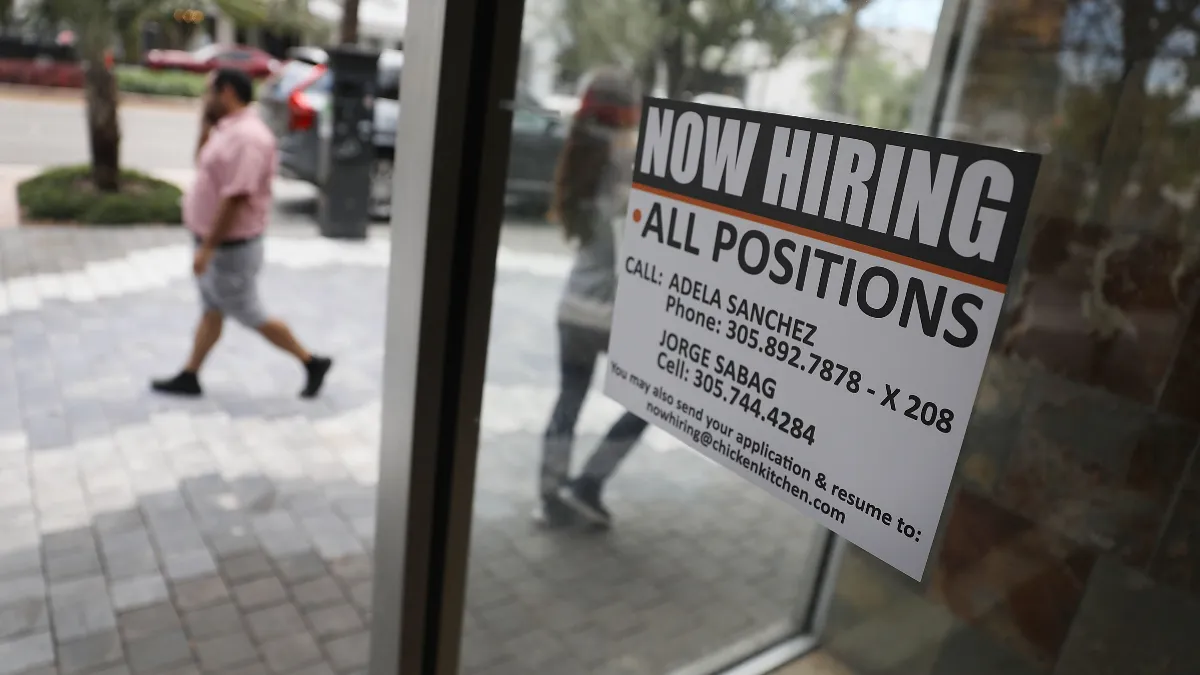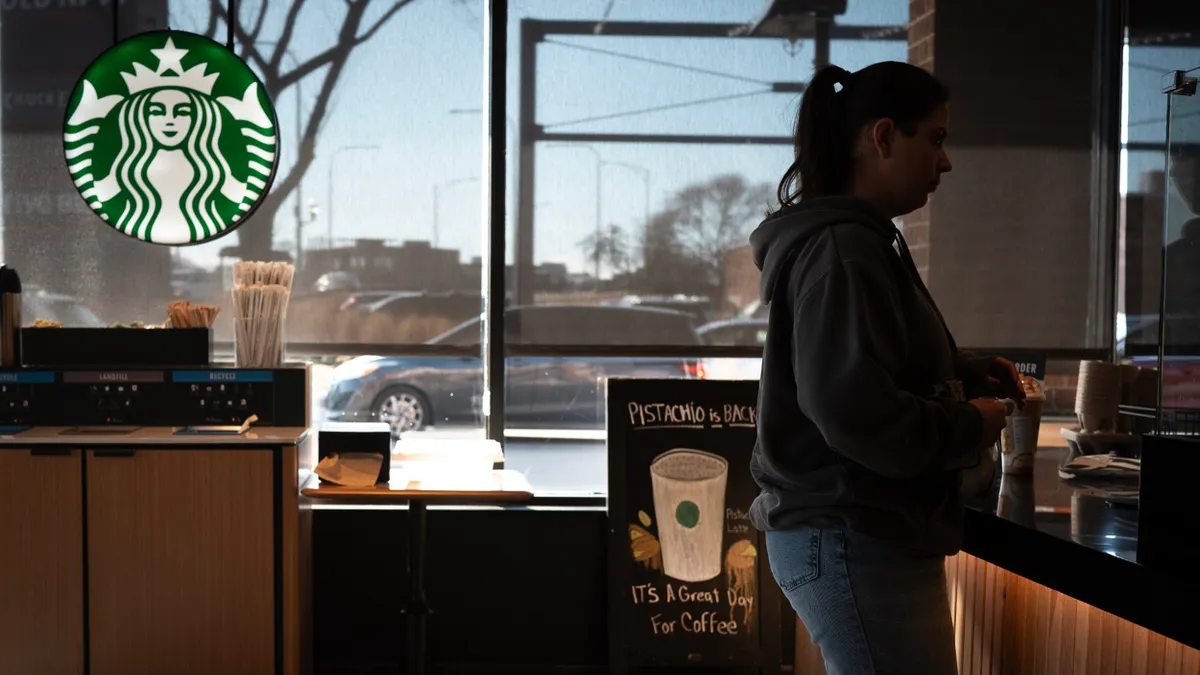While eating and drinking places gained 1.3 million jobs during the first seven months of 2021, the industry is still 1 million jobs short from reaching its pre-pandemic level of 12.3 million, according to the National Restaurant Association.
In August, however, the industry lost over 40,000 jobs for the first time this year due to an uptick in coronavirus cases, keeping the labor shortage top of mind. Without enough workers, many restaurants have reduced operating hours and rely on overburdened staff who face stronger diner demand.
Many operators continue to pin the labor crisis on higher unemployment benefits offered during the pandemic, but a closer look at several labor reports released in the past few weeks show the situation is much more complicated.
Over a quarter of restaurants can't find enough cooks
Twenty-six percent of restaurants say they are looking for cooks and line cooks, while 17% are in need of servers and 7% are seeking bartenders, according to 7shifts data emailed to Restaurant Dive. Restaurant jobs data was sourced from over 2,400 job postings from over 1,800 restaurants across North America from June 1 to Aug. 22, 2021, while 7shifts used internal data from over 18,000 restaurant locations and 500,000 employees with over 90% sourced in North America.
The hardest positions to fill are for cooks and line cooks, managers and bartenders, the company said. Twenty-three percent of postings for cooks/line cooks receive applications while 37% of manager positions receive applications, according to 7shifts. Fifty-six percent of bartending postings attract applicants.
Sit-down restaurants across the industry are already feeling the pinch of reduced staffing. Full-service concepts are operating with 6.2 fewer employees in the back of house and 2.8 fewer staff members in the front of house compared to 2019, according to a report by Black Box Intelligence and Snagajob. The report includes survey results from over 4,700 former, current and future hourly restaurant workers, as well as data from Black Box Workforce Intelligence.
Limited-service restaurants are also under labor pressure, and a handful of Chick-fil-A and McDonald's units have had to close their dining rooms due to insufficient staffing. Some of the Chick-fil-A restaurants said they disabled curbside ordering to reduce strain on their workers, according to CBS News.
Many restaurant employees just aren't coming back
Numerous workers have left the restaurant industry to seek careers elsewhere, especially after many restaurants closed early in the pandemic. Fifteen percent of hourly workers surveyed by Black Box/Snagajob said they have changed industries in the past year, while 33% would like to do so.
Thirty percent of former restaurant employees found office positions and 17% went into teaching or education, according to Technomic's Crisis on the Front Lines study. Many have also turned to industries that are experiencing tremendous growth. Warehouse/logistics jobs, following a boom in online sales, are up 278% and on-demand jobs, which can provide more flexibility for both workers and employers, are up 183% compared to before the pandemic, according to Snagajob data.
Most workers are leaving the restaurant industry for these three reasons: to receive higher pay (28%); for access to a more consistent schedule/income (23%); and because they lack access to professional development and promotional opportunities (17%), according to Black Box/Snagajob.
Hourly wages are going up
Many restaurants are offering hiring incentives and hourly wages above minimum wage to attract fresh labor. Limited-service hourly wages rose 10% year over year in Q2 2021, according to Black Box Workforce Intelligence data, marking the highest increase the industry has reported in several years. Full-service line cooks saw wages increase 6% during the period, compared to 3% in Q1 2021.
But better pay hasn't been enough to keep employees on the job. Turnover rates for both limited-service and full-service restaurants are higher than they were pre-pandemic, reaching 144% and 106%, respectively, in June. In 2019, limited-service restaurants recorded 135% turnover and full-service operators experienced 102% turnover, according to the Black Box/Snagajob report.
Incidents of abuse have increased
Though restaurant pay is improving, rates of abuse inflicted by both customers and managers have risen during the pandemic. According to the Black Box/Snagajob report, 62% of workers have experienced emotional abuse/disrespect from customers while 49% said they experienced emotional abuse from managers. Fifteen percent of employees said they experienced sexual harassment from customers or managers/co-workers.
A One Fair Wage report from December reiterates these findings, especially with customers acting out in response to the enforcement of COVID-19 protocols. Some workers said customers have threatened to not give a good tip unless the servers took off their masks.
Such harassment could continue, especially with a majority (83%) of workers saying they plan to keep wearing a mask while working regardless of the business or state requirements, according to Black Box/Snagajob.
This dynamic is likely to become more complicated as states and municipalities increasingly require proof of vaccines for diners and employees to enter restaurants. One-third of diners have already said they would leave a restaurant if asked to provide proof of vaccination. And some employees are also pushing back against these mandates. A New York City restaurant owner reported that 20% of his staff said they would rather resign than get vaccines, according to Business Insider.
What restaurants can do
Hiring and retention have been long-standing challenges in the restaurant industry, but the combination of surging diner demand and a shrinking labor market push the stakes even higher. Still, there are strategy pivots restaurants can make to attract and retain workers.
Use technology: Operators that used restaurant technology reduced staff turnover by 13%, which saved over $6,000 in costs to hire new staff for a 10-person team, according to 7shifts. On-demand pay apps have shown to improve retention rates as well, especially since they offer more flexibility on pay schedules versus the typical every-other-week pay date. App-based applications that streamline the process and cut down completion time have also helped boost applicant numbers.
Ensure health and safety on the job: For operators enforcing mask and vaccine mandates, Black Box/Snagajob suggests operators should provide support to workers and make sure staff are comfortable with enforcing these rules — adding that dialogue is key between staff and managers to mitigate potential issues that could impact retention. Employee health check tools can also help ensure staff remain coronavirus-free. Such tools helped prevent the spread of over 500 cases and were used 1.5 million times by employees during the pandemic, according to 7shifts.
Offer flexibility: Over one-third of hourly workers and job seekers are parents, so operators should highlight any flexibility they can offer, Black Box/Snagajob suggests. Employers should talk to their staff to see what they need if they are struggling with childcare and offer to adjust hours, the companies said.
Make job postings clear: The top five things workers look for in a new job is a starting hourly wage, opportunities for advancement, flexible schedules, health benefits, paid-time off and information about company culture, according to Black Box/Snagajob. These offerings, as well as any hiring incentives, should be clear and apparent in job postings, the companies said. Making pay rates transparent from the beginning has also helped boost job applications.
Appeal to younger job seekers: A majority of workers in both limited- and full-service restaurants are 16- to 24-years-old, according to Black Box/Snagajob, so job descriptions and work environments should be attractive to them, the companies said. Setting up an employee referral program can also boost applicant rates, as they have a hire rate five times higher than other applicants, the companies said.





















